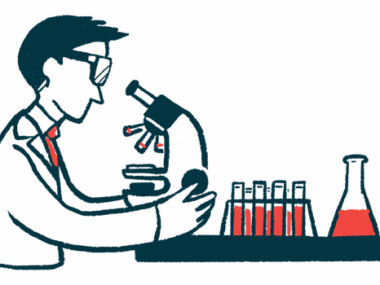Unexplained Kidney, Neurological Problems, Fever Could Be Sjögren’s, Case Study Suggests
Written by |

Primary Sjögren’s syndrome (pSS) should be considered in children with unexplained kidney and neurological symptoms, and unexplained fever, a study suggests.
In the study, “Nephrological disorders and neurological involvement in pediatric primary Sjogren syndrome: a case report and review of literature,” published in the journal Pediatric Rheumatology, researchers reported the case of a 12-year-old girl with pSS who showed kidney and neurological problems. Results of a literature review on similar cases also is included in their report.
Sjögren’s syndrome is an autoimmune disease in which the immune system mistakenly attacks glands that produce secretions, such as tears and saliva, through the production of self-targeting antibodies (autoantibodies). The disease mostly develops during adulthood and affects more women than men.
Due to its rarity in pediatric patients, little is known about the clinical features of pSS in children, but reports so far suggest that symptoms often differ from those observed in adults.
Up to half of adults with pSS develop additional extra-glandular manifestations, including those affecting the nervous system, the kidneys, and the respiratory and vascular systems.
Notably, symptoms of kidney and central nervous system (CNS, the brain and spinal cord) damage are uncommon in pediatric cases. Renal manifestations (symptoms) are present in up to 11.5% of pediatric patients, while CNS manifestations have been reported in about 8.7%; even fewer patients show both.
Researchers at Tongde Hospital of Zhejiang Province, China, now described the case of a 12-year-old girl with pSS who developed joint pain, kidney problems, and neurological symptoms.
The girl was admitted to the hospital due to persistent swelling and joint pain in her left knee. She had no other complaints and no symptoms suggestive of Sjögren’s syndrome, such as fever, dry eyes and/or mouth, or inflammation of the salivary glands.
Laboratory testing revealed normal blood counts, but an abnormal presence of glucose (a type of sugar) in urine, suggestive of kidney dysfunction. She also tested positive for autoantibodies characteristic of certain autoimmune diseases (anti-nuclear autoantibodies) and of Sjögren’s syndrome (anti-Sjögren’s syndrome type B autoantibodies).
This prompted an analysis of the tissues in her salivary glands and kidneys. Results showed high numbers of immune cells within the salivary glands and damage in the kidney tubules. These clinical features led to the diagnosis of pSS with kidney involvement.
After the first two months of treatment with disease-modifying anti-rheumatic drugs, the girl’s joint pain was resolved completely, and her blood counts were normal.
Three months later, she was admitted to the hospital with intermittent headache, fever, nausea, and vomiting. Brain imaging showed no abnormalities, while other examinations highlighted sensation problems in the upper limbs and signs of meningitis — an inflammation (swelling) of the protective membranes covering the CNS.
While meningitis is usually caused by bacterial or viral infections, tests failed to detect any such infection. The researchers, however, did not exclude the possibility of viral meningitis and the girl initiated an anti-viral treatment, which soon was discontinued due to an allergic reaction.
Notably, her symptoms eased significantly after three days. “Based on the patient’s medical history, laboratory and imaging examination, and treatment, we speculate that the disorders of the nervous system were caused by the Sjögren syndrome,” the researchers wrote.
During a follow-up period of one-and-a-half years, her kidney function was stable and there were no signs of residual nervous system damage.
Based on this case report, the team then reviewed published studies reporting cases of children with pSS showing kidney and/or neurological involvement. In total, 20 eligible case reports, in addition to the present study, were found, comprising a total of 22 children and adolescents (20 girls and two boys).
Kidney damage was reported in more than half of these cases, while neurological symptoms occurred in 10 cases, often before pSS diagnosis (in contrast with the current case report). Only three patients (including the girl in this report) presented both kidney and neurological involvement.
Clinical features of kidney problems involved the abnormal presence of proteins, blood, and glucose in urine or of an alkaline (basic pH) urine. Damage in glomeruli, the kidneys’ basic filtration unit, was rare, being reported in only three of the children.
Neurological symptoms included fever, headache, mental disorder, abnormal movement of the eyes, sluggishness, muscle weakness, urinary incontinence, lower sensitivity to pain, walking difficulties, and ptosis (when the upper eyelid droops over the eye).
Children with neurological involvement showed relatively less favorable outcomes, with the persistence of residual symptoms despite immunosuppressive therapies.
“If children present with unexplained [kidney] diseases, neurological abnormalities, and unexplained fever, pSS should be considered,” the researchers wrote, noting that special blood testing should be added to routine laboratory tests and that kidney biopsy may help assess the extent of kidney damage.
The team emphasized that while there currently are no guidelines for the diagnosis and treatment of Sjögren’s in pediatric patients, early detection and initiation of appropriate treatment for kidney and neurological problems could improve prognosis and prevent potential complications.
“Long term follow-up is essential for these children due to the possibility of rapid progression,” the researchers added.





